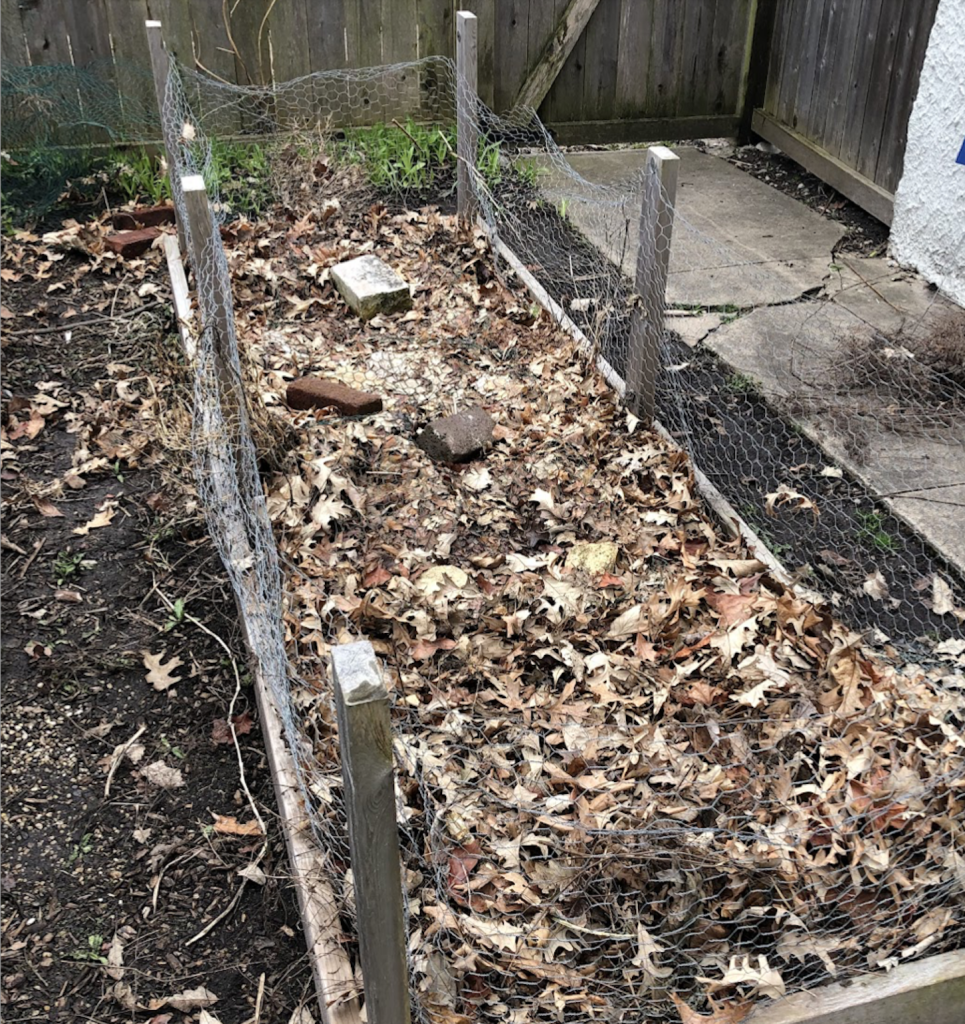After many years in the garden of struggling with dried out soils and low soil health come June, I began evaluating different solutions to address these concerns. The first one that came to mind was planting crops as soon as the snow had melted.
Early planting was ineffective in my primary goals of soil conservation, which were protecting the soil from erosion, preventing the soil from drying out, and to add fertility wherever possible. I split up my four 3’x10’ raised beds into 8 sections, then planted peas, radishes, beets, Swiss chard, and broad beans each in one section and left the rest empty. This succeeded to some degree in protecting the soil, as I densely seeded all these crops which took root and held the soil in place. Additionally, the peas succeeded in adding fertility to the soil, as they are a nitrogen-fixing crop. However, there were a few main flaws with this approach. Firstly, half of the growing space was still bare and vulnerable to heavy rains, the sun, and wind. I could’ve planted more crops but I didn’t have enough seed and there was also not enough interest or capability to use all this produce effectively in the kitchen. As a result, many of the radishes and beets went to waste and were just thrown out. While I could’ve figured out someone to take all these radishes and beets, that would frankly be too much effort for the small kitchen garden I am trying to cultivate. Additionally, the early crops I planted were still growing into June which left a very small window for my summer crops, which were set back by a few weeks as a result. So while it may have been better than leaving the beds completely bare, it was still not an optimal solution.
I evaluated other solutions, such as wood chips, or garden hay to cover the garden beds over winter, but both of these options would involve finding a source and then transporting that to my garden, which again, is too much work for my small kitchen garden. Then I thought about what naturally occurs in my native ecosystem of deciduous forest, which is every fall, the leaves fall off the oak trees and decompose on the ground. However, given grass lawns, these leaves are dumped in the street and trucked off. Instead of this, I tried putting a foot thick layer on two of my raised beds to see what would happen. Before I did so, I made sure oak leaves are relatively neutral, as to not adjust my soil pH.

I secured the leaves down with chicken wire and bricks so the leaves wouldn’t blow away.
The results were very encouraging, as when I pulled back the leaves the soil was very moist, there were many decomposers such as earthworms, and the soil was much richer in the beds with the leaves.
Additionally, I can leave the leaves on for however long I want, so I am not forced into planting early, while still maintaining my original goals of soil conservation. Overall, this is a strategy that worked very well for me, and I will be sure to repeat and improve upon it in years to come.
